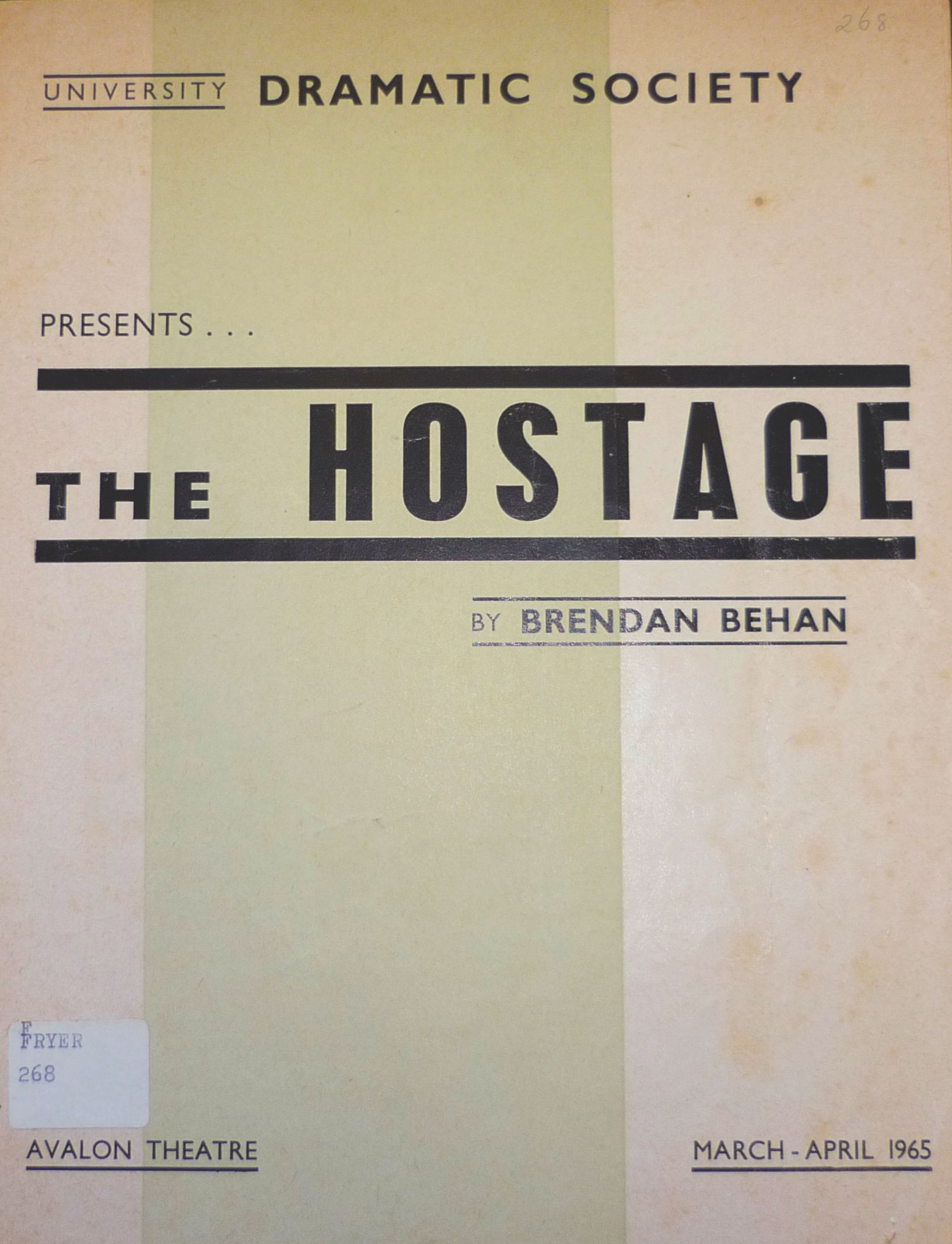Amid the modern unit blocks, apartment buildings, and shops on Sir Fred Schonell Drive, one building stands out: the Avalon theatre. Its faded façade and art deco architecture hark back to a pre-WWII era in Brisbane. If only its walls could talk from behind the boarded-up doors. This once-grand old building was featured in a 2015 local publication, Brisbane Art Deco, taking its place alongside other Brisbane art deco gems.
Church Hall to Cinema
Avalon was built in 1921, possibly as a church hall. After being purchased by the St. Lucia Progress Association, it became known as the “St.Lucia Show Hall.”1 In 1947 it became the Esquire Cinema but the building changed hands again in 1956 and assumed its current name around 1958.2
UQ Beginnings
The University of Queensland purchased the Avalon theatre in 1962 and it quickly became a thriving hub for both drama performances and cultural activity on the St.Lucia campus and more broadly in Brisbane.
“A theatre booking sheet for the latter half of 1965 shows the range of theatre hirers: The Queensland Arts Council (Dr Gertrude Langer); the Archi[tectur]e Revue; the Goethe Society; the German Department (Professor Leopold); the Staff Players (Eunice Hanger); WUS [World Union of Students] (Helen Rodwell); the College Players; Dramsoc (Ian Heap) and the King’s-Women’s Players (Tony Boyd). The heavy demand on the Avalon was partly a product of its own success in providing a focal point for theatrical activity on University property.”3
A Teaching and Performance Space
In 1970, The Schonell theatre opened, which impacted on Avalon. Performances previously held at the theatre were now moved to the Schonell. The old building, however, found a new purpose as a teaching space. Drama subjects became a more formalised part of English courses and so there was a growing need for a teaching as well as performance space. Throughout the 1970s and 1980s the Avalon was used for undergraduate courses.4 Television students also used the Avalon space. The TV Unit shared Avalon until 1992, having moved there from the Social Sciences Building.
Robert Forster conjures up the excitement and anticipation of being a student at the Avalon in his tribute to his friend and fellow creative, Grant McLennan, whom he first met while studying there:
Grant and I started the Brisbane band The Go-Betweens in January 1978. We’d met two years earlier in the drama department at the University of Queensland, where we were both doing Bachelor of Arts degrees centred mainly on English literature. Most of the drama subjects were taught at a small off-campus theatre called the Avalon. It was a jostling atmosphere in which Grant and I felt immediately at home, and our friendship began and blossomed here, amid the costume trunks, the works of Beckett, Genet and Ionesco (perfect for a pop band), and a genial professor, an Englishman by the name of Harry Garlick. It was action, and fun, and good learning, and it’s where The Go-Betweens started.5
A New Chapter
While its doors have remained closed since 2004, the building could live through yet another era in Brisbane's history. The Avalon site is set for redevelopment. An Avalon Theatre restoration is currently being proposed as part of the St.Lucia Master Plan. Whatever the future plans or redevelopment, the building's rich past and contribution to student life at UQ will stand the test of time.

Read more about the history and theatre performances of Avalon from the Fryer collection:
- A History of the Avalon Theatre, 1921-2007
- Avalon Theatre Program File
- Nigel Pearn Papers
- Dramsoc Newsletter
- Brisbane Art Deco
1 Nigel Pearn and Richard Fotheringham, A History of the Avalon Theatre: 1921 - 2007 (St.Lucia: The University of Queensland), 1.
2 Ibid., 2.
3 Ibid., 11.
4 Ibid., 24.
5 Robert Forster, "A True Hipster: Remembering Grant McLennan," The Monthly 14 (July 2006): 50.